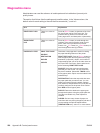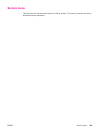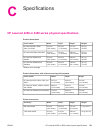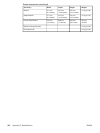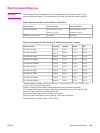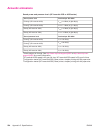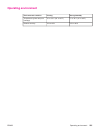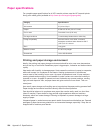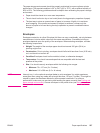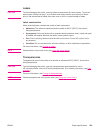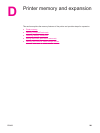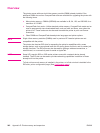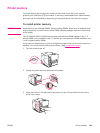
Paper specifications
For complete paper specifications for all HP LaserJet printers, see the HP LaserJet printer
family print media guide (available at http://www.hp.com/support/ljpaperguide).
Category Specifications
Acid content 5.5 pH to 8.0 pH
Caliper 0.094 to 0.18 mm (3.0 to 7.0 mils)
Curl in ream Flat within 5 mm (0.02 inch)
Cut edge conditions Cut with sharp blades with no visible fray.
Fusing compatibility Must not scorch, melt, offset, or release
hazardous emissions when heated to 200°C
(392°F) for 0.1 second.
Grain Long grain
Moisture content 4% to 6% by weight
Smoothness 100 to 250 Sheffield
Printing and paper storage environment
Ideally, the printing and paper storage environment should be at or near room temperature,
and not too dry or too humid. Remember paper is hygroscopic; it absorbs and loses moisture
rapidly.
Heat works with humidity to damage paper. Heat causes the moisture in paper to evaporate,
while cold causes it to condense on the sheets. Heating systems and air conditioners
remove most of the humidity from a room. As paper is opened and used, it loses moisture,
causing streaks and smudging. Humid weather or water coolers can cause the humidity to
increase in a room. As paper is opened and used it absorbs any excess moisture, causing
light print and dropouts. Also, as paper loses and gains moisture it can distort. This can
cause jams.
As a result, paper storage and handling are as important as the paper-making process itself.
Paper storage environmental conditions directly affect the feed operation.
Care should be taken not to purchase more paper than can be easily used in a short time
(about 3 months). Paper stored for long periods might experience heat and moisture
extremes, which can cause damage. Planning is important to prevent damage to a large
supply of paper.
Unopened paper in sealed reams can remain stable for several months before use. Opened
packages of paper have more potential for environmental damage, especially if they are not
wrapped with a moisture-proof barrier.
236 Appendix C Specifications ENWW



